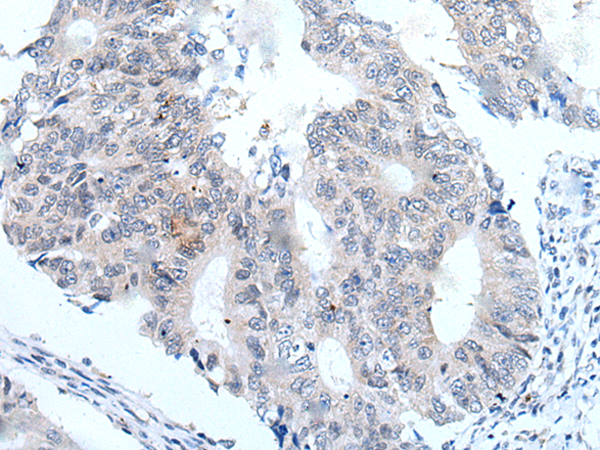
| WB | 咨询技术 | Human,Mouse,Rat |
| IF | 咨询技术 | Human,Mouse,Rat |
| IHC | 1/20-1/100 | Human,Mouse,Rat |
| ICC | 技术咨询 | Human,Mouse,Rat |
| FCM | 咨询技术 | Human,Mouse,Rat |
| Elisa | 1/5000-1/10000 | Human,Mouse,Rat |
| Aliases | ATG1; ATG1A; UNC51; hATG1; Unc51.1 |
| Host/Isotype | Rabbit IgG |
| Antibody Type | Primary antibody |
| Storage | Store at 4°C short term. Aliquot and store at -20°C long term. Avoid freeze/thaw cycles. |
| Species Reactivity | Human |
| Immunogen | Synthetic peptide of human ULK1 |
| Formulation | Purified antibody in PBS with 0.05% sodium azide and 50% glycerol. |
+ +
以下是关于ULK1抗体的3篇代表性文献,供参考:
1. **"ULK1 induces autophagy by phosphorylating Beclin-1 and activating VPS34 lipid kinase"**
*作者:Kundu M 等(2008),Nature*
摘要:研究通过ULK1抗体检测其在自噬启动中的表达及活性,发现ULK1通过磷酸化Beclin-1激活自噬体形成。
2. **"Phosphorylation of ULK1 (hATG1) by AMP-activated protein kinase connects energy sensing to mitophagy"**
*作者:Egan DF 等(2011),Cell*
摘要:利用ULK1特异性抗体验证AMPK对ULK1的磷酸化调控,阐明能量应激下ULK1介导线粒体自噬的分子机制。
3. **"Atg13-FIP200 complex mediates mTOR signaling to the autophagy machinery"**
*作者:Hara T 等(2009),Mol Biol Cell*
摘要:通过ULK1抗体进行免疫共沉淀实验,揭示ULK1与Atg13-FIP200复合物在mTOR信号调控自噬中的关键作用。
The ULK1 (Unc-51-like kinase 1) antibody is a key tool for studying the molecular mechanisms of autophagy, a critical cellular process for maintaining homeostasis. ULK1. a serine/threonine kinase homologous to yeast Atg1. acts as a master initiator of autophagy under stress conditions. It forms a core complex with ATG13. FIP200. and ATG101. which integrates upstream signals from mTORC1 (inhibitory) and AMPK (activating) to regulate autophagosome formation. ULK1 phosphorylates downstream effectors like Beclin-1 and PI3KC3 to promote membrane nucleation.
Researchers use ULK1 antibodies in techniques like Western blotting, immunofluorescence, and immunohistochemistry to detect ULK1 expression, localization, and post-translational modifications. These antibodies help elucidate ULK1’s regulatory phosphorylation sites (e.g., Ser317/Ser777 by AMPK; Ser757 by mTOR) and its dysregulation in diseases. ULK1 is implicated in cancer (dual roles in tumor suppression/progression), neurodegenerative disorders (clearance of protein aggregates), and metabolic diseases. Commercial ULK1 antibodies are often validated for specificity against human/mouse isoforms, with some targeting phosphorylated forms to study activation states. Challenges include distinguishing ULK1 from its homolog ULK2 and detecting low-abundance endogenous proteins. Recent studies also explore ULK1’s non-autophagic roles in apoptosis, immune response, and vesicle trafficking, expanding its therapeutic relevance.
×